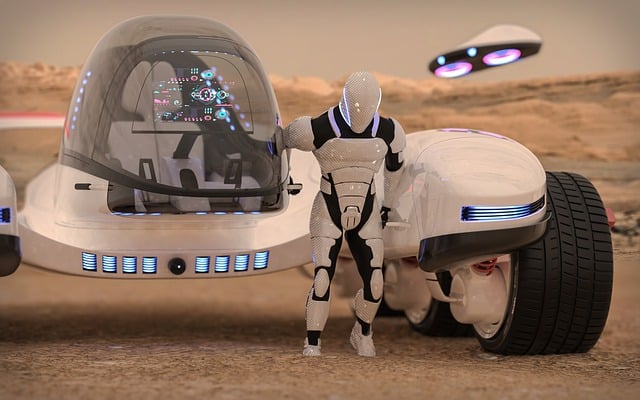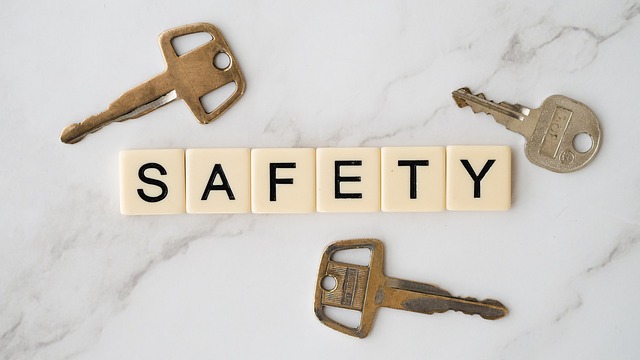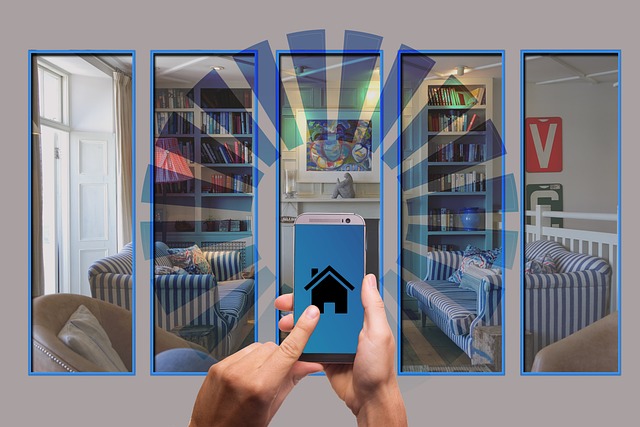Personal safety is undergoing a rapid transformation driven by advanced safety product technology. Emerging safety products leverage innovative materials, smart sensors, and AI for enhanced protection in diverse environments. Future trends predict data-driven solutions using machine learning to anticipate risks before they occur, fostering a culture of proactive safety globally. Key innovations include wearable devices that detect hazards, AI-integrated protective gear, and advanced materials offering improved durability and impact resistance. These future safety trends aim to revolutionize personal safety standards across industries, from industrial to everyday life.
The future of safety product development is brimming with innovative advancements, shaping a landscape where personal and collective well-being are paramount. From smart clothing that enhances individual protection to the transformative power of 3D printing and biomanufactured materials, emerging technologies are redefining tomorrow’s protective gear. This article explores these trends, delving into the Internet of Things (IoT), Augmented Reality (AR), blockchain traceability, and sustainable solutions, while predicting a future guided by global collaboration and adaptive technology. Discover how personal safety innovations and emerging safety products will revolutionize protection in an ever-evolving world.
- Personal Safety Innovations: Shaping the Future
- – Exploring cutting-edge technologies for enhanced individual protection.
- – Smart clothing and wearable devices: The new frontier in personal safety.
- Emerging Safety Products: A Glimpse into Tomorrow's Protective Gear
Personal Safety Innovations: Shaping the Future

The landscape of personal safety is undergoing a metamorphosis driven by rapid advancements in safety product technology. Emerging safety products are leveraging innovative materials, smart sensors, and advanced connectivity to offer unparalleled protection in both familiar and unforeseen environments. From wearable devices that detect and alert users of potential hazards to protective gear integrated with AI-powered risk assessment systems, these personal safety innovations are revolutionizing how we approach safeguarding ourselves.
Looking ahead, the future of protection gear promises to be more proactive than reactive. By utilizing data analytics and machine learning algorithms, safety product development will anticipate risks before they occur, providing users with real-time insights and adaptive solutions. This evolution in personal safety developments not only ensures better preparedness but also fosters a culture of awareness and proactive safety measures in an increasingly complex world.
– Exploring cutting-edge technologies for enhanced individual protection.

The future of safety product development is being reshaped by cutting-edge technologies, paving the way for enhanced individual protection like never before. From advanced materials that offer superior durability and impact resistance to smart sensors capable of detecting and responding to environmental hazards in real time, these innovations are transforming personal safety standards. As we delve deeper into the digital age, the integration of IoT (Internet of Things) devices and AI (Artificial Intelligence) algorithms promises a new era of predictive safety measures, where gear can adapt to users’ needs and surroundings autonomously.
Emerging safety products are also leveraging biometrics and wearable technology, providing more precise monitoring of vital signs and real-time health assessments. This allows for immediate interventions in case of emergencies, ensuring individuals receive the necessary support before help arrives. Moreover, advancements in 3D printing and customizable designs enable tailored protection gear that fits users perfectly, enhancing comfort and efficiency while reducing the risk of injuries further. These personal safety innovations are not just trends; they represent a significant leap forward in safeguarding people across various sectors, from industrial settings to everyday life.
– Smart clothing and wearable devices: The new frontier in personal safety.

The integration of smart clothing and wearable devices is ushering in a new era of personal safety innovations. These technologies are transforming the way individuals protect themselves, offering advanced capabilities that go beyond traditional protection gear. Wearable sensors can monitor vital signs, detect falls, and even predict potential hazards, enabling immediate alerts and assistance. As future safety trends evolve, we can expect these devices to become increasingly sophisticated, incorporating AI algorithms for enhanced decision-making and seamless integration with emergency response systems.
Emerging safety products in this realm are designed to be discrete yet powerful, leveraging cutting-edge safety product technology. From smart fabrics that can withstand extreme conditions to wearable cameras that record evidence during emergencies, these developments cater to a wide range of scenarios, from outdoor adventures to everyday urban life. The future of protection gear looks promising, with continuous advancements in materials science, sensor technology, and connectivity, all aimed at enhancing personal safety in unprecedented ways.
Emerging Safety Products: A Glimpse into Tomorrow's Protective Gear

The future of safety product development is brimming with innovation and technological advancements that promise to transform personal protective gear into smarter, more adaptive solutions. Emerging safety products are set to revolutionize how individuals safeguard themselves in various environments, from work sites to everyday activities. These developments are driven by a need for enhanced protection, improved comfort, and the integration of smart features that offer real-time data insights.
Personal safety innovations include the design of interconnected devices and clothing with embedded sensors, capable of detecting potential hazards and alerting wearers. Advanced materials, such as lightweight yet durable composites and breathable fabrics with built-in fire or chemical resistance, are being developed to meet the evolving needs of workers across industries. Additionally, the integration of AI and machine learning algorithms promises to predict and mitigate risks, making safety product technology more proactive than ever before.





